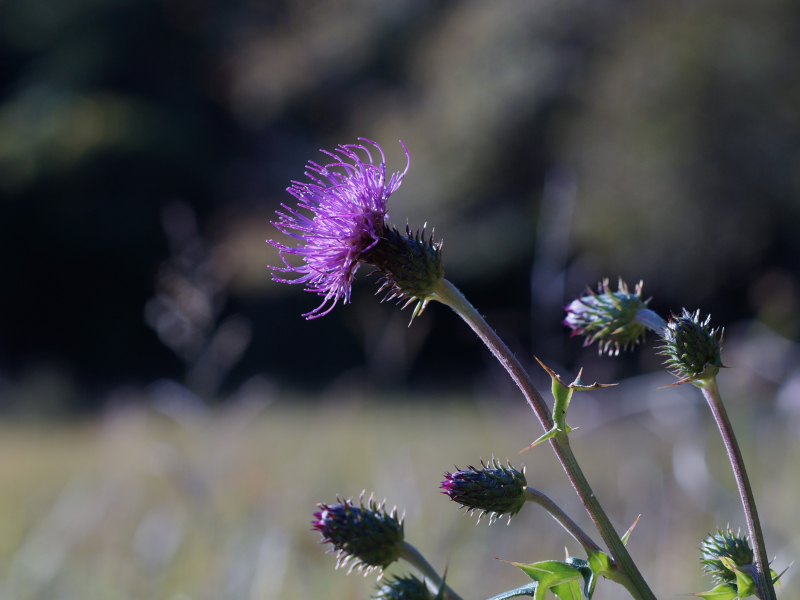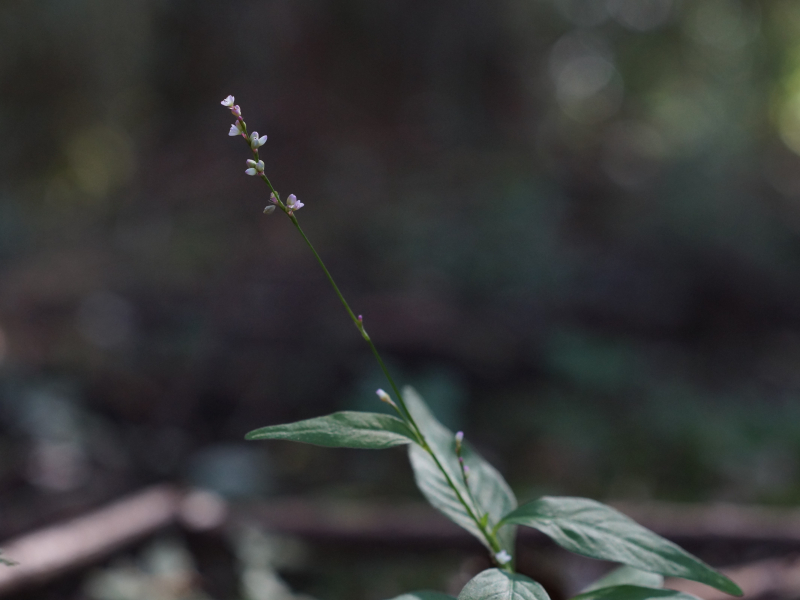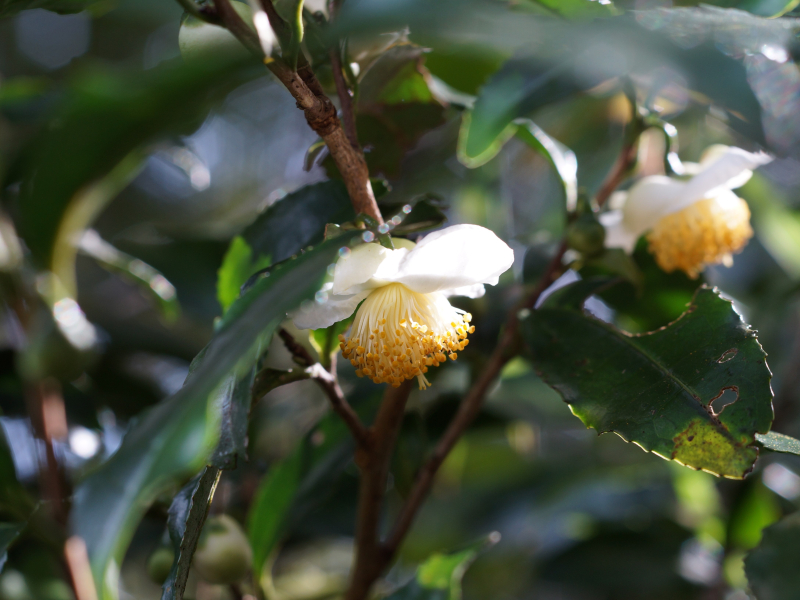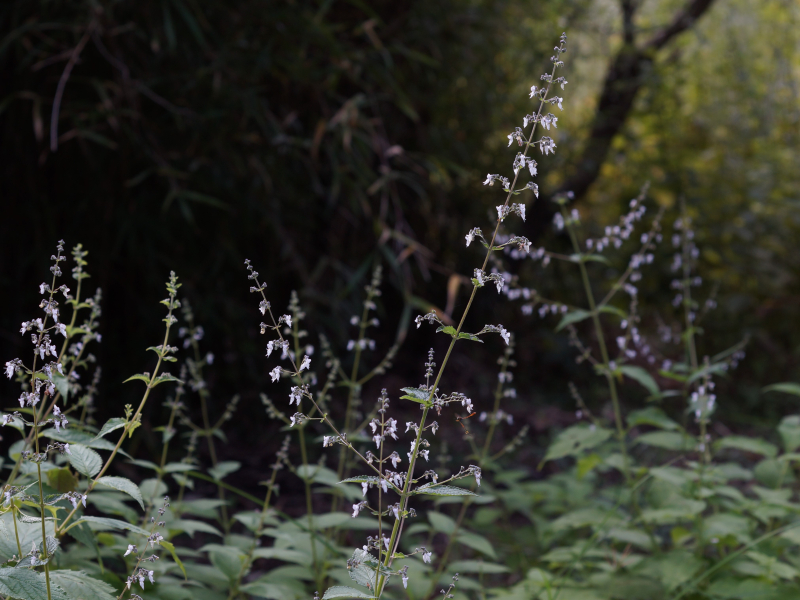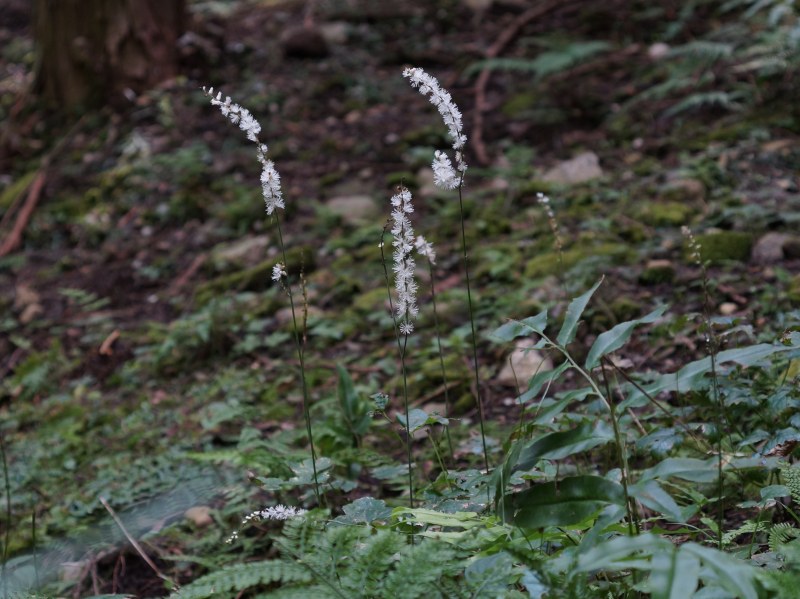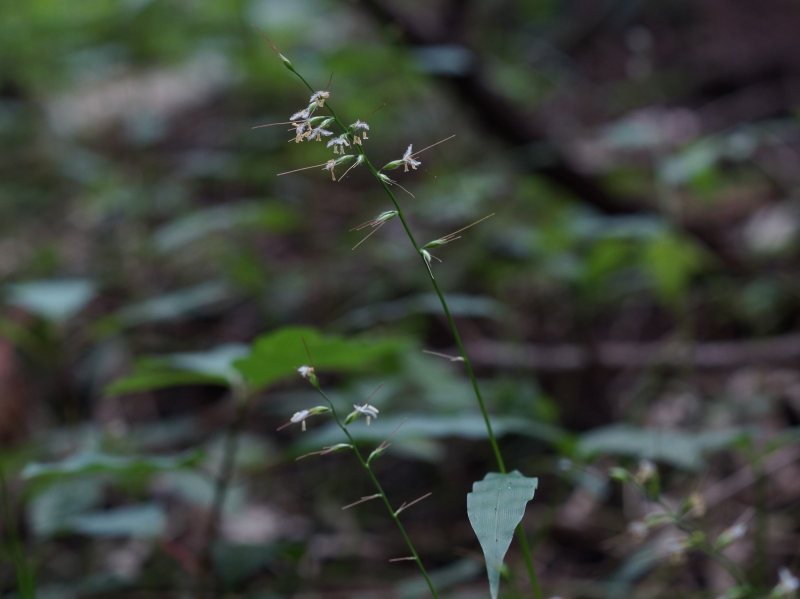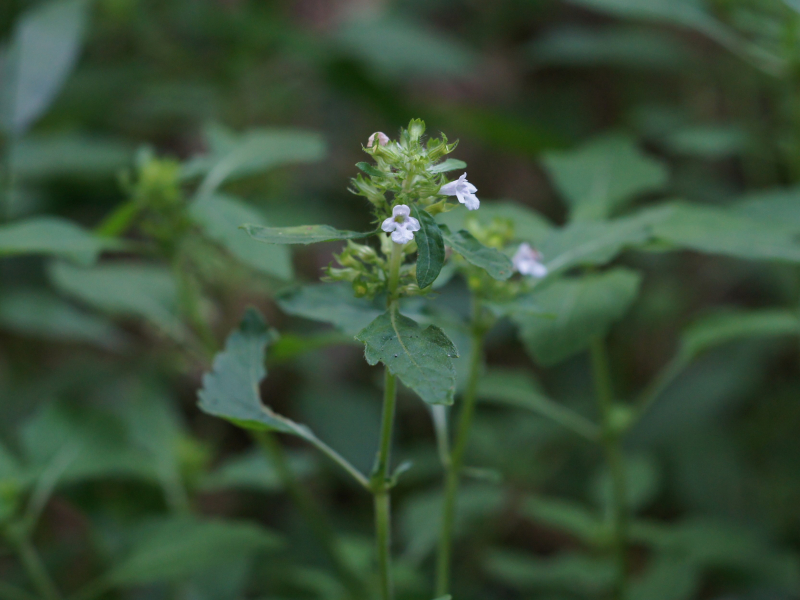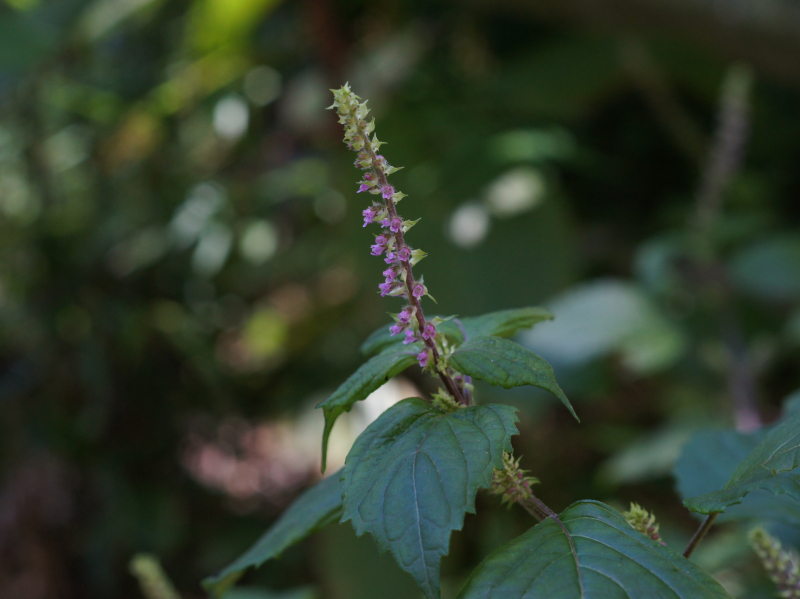フィールド日記
2023.11.10
タイアザミ
タイアザミが咲いています。関東地方では最も身近なアザミの仲間です。和名の由来ははっきりしないようですが、葉にするどい刺があり、触ると「痛いアザミ」からタイアザミとなったという説があります。
"Tai-Azami (タイアザミ)" plants are in bloom. They are the most common plants in the Kanto region that belong to the "Azami" group. The origin of its name is not so clear, but some people say that the name comes from the fact that the plants have thorns on their leaves and they hurt you when you touch them.
2023.11.07
コシオガマ
コシオガマが咲いています。コシオガマはハマウツボ科の半寄生植物で、自ら光合成をする一方で、根で他の植物に取り付き、栄養を奪っています。同じハマウツボ科の寄生植物が世界中で農作物に大きな被害を及ぼしていることから、日本原産のコシオガマは寄生に関する研究のモデル植物として用いられています。
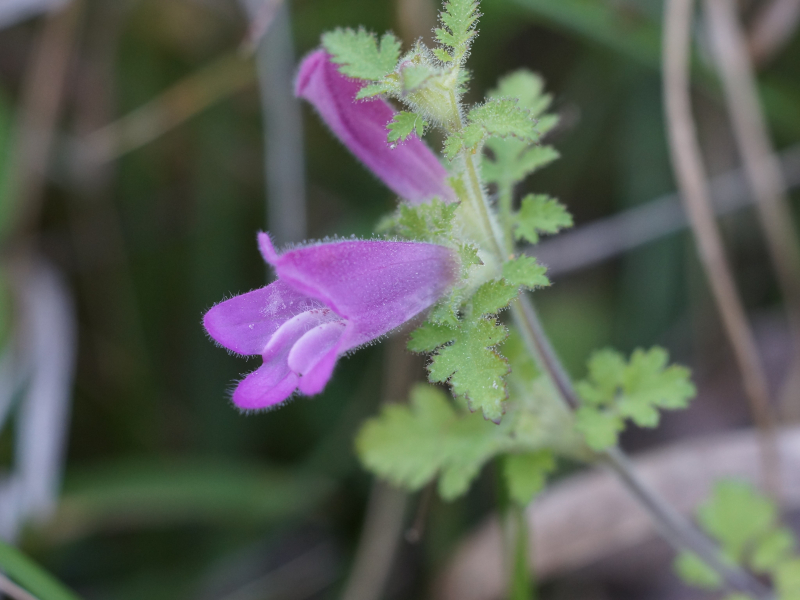
2023.11.03
ハナタデ
ハナタデが咲いています。近縁種に比べて小型で、花数が少ないのが特徴です。牧野富太郎博士によると、本種をハナタデと呼ぶのは間違いで、より花が密につく現在イヌタデと呼ばれている植物が、本来ハナタデと呼ばれるべき植物だそうです。そのため本種をヤブタデと呼ぶこともあります。
"Hana-Tade (ハナタデ)" plants are in bloom. They are smaller and bear less flowers compared to the relative species. According to Dr. Tomitaro Makino, it's wrong to call this species "Hana-Tade". Instead, what we now call "Inu-Tade (イヌタデ)", which are densely flowered plants, should be called "Hana-Tade". Therefore, "Hana-Tade" plants are also called "Yabu-Tade (ヤブタデ)".
2023.10.31
チャ
お茶の花が咲いています。植物としての種の名前はチャまたはチャノキと呼ばれています。ツバキやサザンカのなかまで、花の形がよく似ています。
Tea trees are in bloom. They are called "Cha (チャ)" or "Chanoki (チャノキ)" as a plant. "Cha" plants belong to the same group as "Tsubaki (ツバキ)" plants and "Sazanka (サザンカ)" plants, so the shape of "Cha" flowers are similar to those of "Tsubaki" plants and "Sazanka" plants.
2023.10.27
セキヤノアキチョウジ
セキヤノアキチョウジが咲いています。山地の林縁などに生えるシソ科の多年草です。和名は関屋の秋丁字の意味で、箱根の関所の近くで見つかったことに由来しますが、実際には関東と中部地方の太平洋側に分布しています。
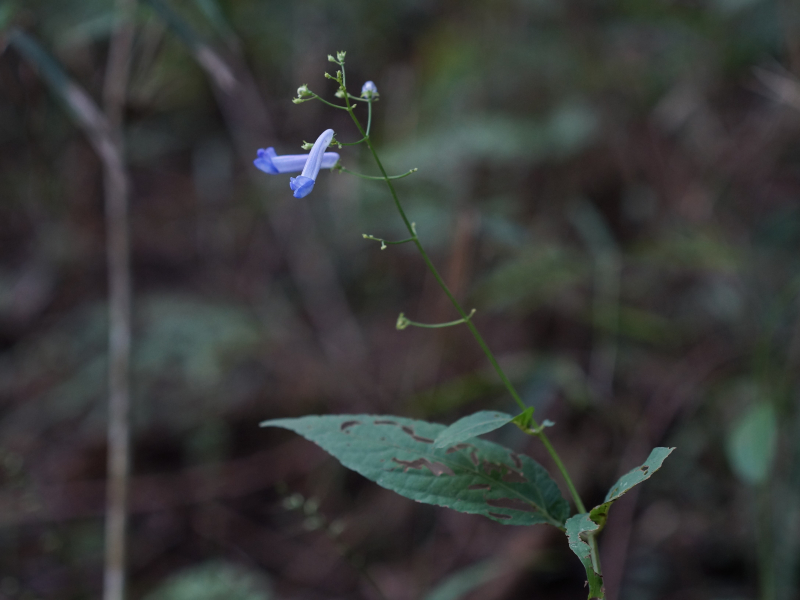
2023.10.24
ヒキオコシ
ヒキオコシが咲いています。和名は、弘法大師が病人に、この草の汁を飲ませたところ、たちまち起き上がったという故事に由来します。強い苦みがあり、古くから民間薬として用いられていたようです。和名と同様の由来でエンメイソウ(延命草)という別名もあります。
2023.10.20
イヌショウマ
イヌショウマが咲いています。多数のおしべがある小さい白い花が穂状につき、よく目立ちます。和名は、食用となり薬草としても利用されるサラシナショウマに似ているものの、本種は利用されないことに由来します。
"Inu-Shouma (イヌショウマ)" plants are in bloom. They are outstanding because they bear white small flowers with a lot of stamens on spikes. The name comes form the fact that although they look like the "Sarashina-Shouma (サラシナショウマ)" plants, which are edible and are used as medicine, the "Inu-Shouma (イヌショウマ)" plants are not used as such.
2023.10.17
チヂミザサ
チヂミザサが咲いています。和名は葉がササの葉に似ていて、波打っていることに由来します。花はあまりめだちませんが、よく見ると羽毛状の毛の生えた雌しべと、ぶら下がった雄しべがあり、繊細な作りをしていて美しいです。
"Chijimi-Zasa (チヂミザサ)" plants are in bloom. The name comes from the fact that their leaves are wavy and look like the leaves of Sasa plants. The flowers are not so outstanding. However, looked at closely, they are delicately beautiful because they have pistils with feathery hair and hanging stamens.
2023.10.13
イヌトウバナ
イヌトウバナが咲いています。やや湿った樹林内や林縁によく見られる多年草です。似た仲間が多く、葉の裏の腺点やがくの毛などが見分けるポイントになります。
"Inu-Toubana (イヌトウバナ)" plants are in bloom. They are perennial plants growing in wet forests and the edges of forests. There are many similar plants, but you can identify "Inu-Toubana" by seeing the glands on the back of leaves and the hair of calyces.
2023.10.10
シソ
シソが咲いています。食用に古くから広く栽培されており、道端などに野生化したものが見られます。葉が紫色のものや、しわがあるものなど、さまざまな品種があります。


